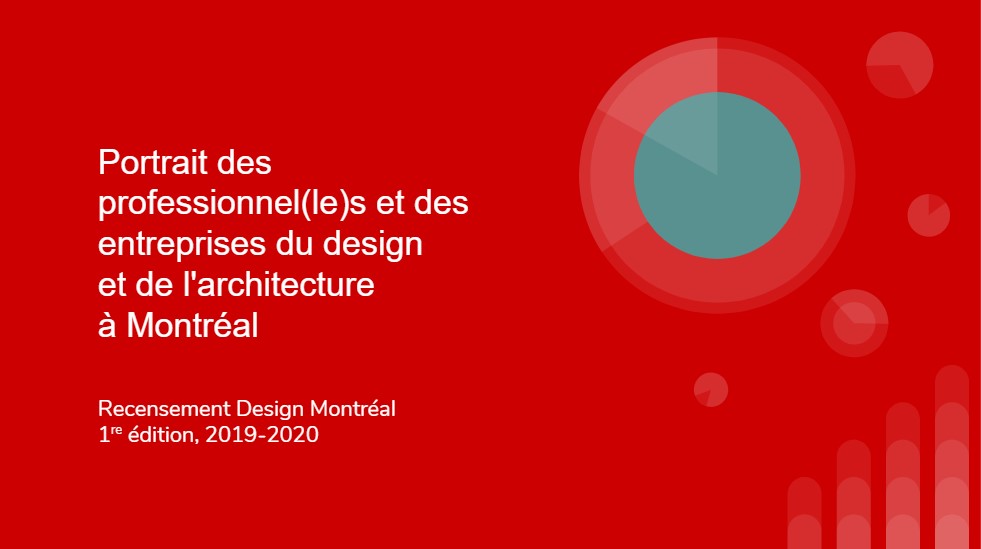The first overview of Montréal’s design and architectural professionals
The first Design Montréal Census was a large-scale operation conducted in 2019–2020 by the Bureau du design, part of Montréal’s Economic Development department, and the firm MCE Conseils, in partnership with the Institut du Nouveau Monde and Québec’s professional associations in design and architecture.
The resulting study report constitutes the first true portrait–overall and by discipline–of Montréal’s design and architecture professionals, along with the firms and organizations that employ them. It shows among other things that Montréal, named a UNESCO City of Design in 2006, is in many respects a fertile environment for the prosperity of professionals who choose to settle there.
Though it consists primarily of very small firms with local clientele, this Montréal business ecosystem is an economic driver: in the opinion of 80% of firms employing professionals in these disciplines, design and architecture not only create value; they are also a growth factor, contributing to improved financial results and competitiveness.
The survey identified 3,283 Montréal businesses that are highly likely to include design or architecture professionals in their ranks. Nearly a quarter of them (768) already do, as they are direct providers of design or architectural services. That statistic translates into as many challenges as it does opportunities in terms of employment or growth for professionals working in the sector, whose numbers are increasing and who include a promising pool of emerging talents, as one quarter of them are aged under 35.
The 2016 Census found that there are 19,255 professionals and technicians in all design and architecture disciplines living and working in the Montréal agglomeration, which amounts to 34% of Québec’s design and architecture workforce. This statistic speaks to the importance of this industry segment as a differentiating element and asset for the city.
The studies and focus group discussions conducted for the Census also revealed how decisive public commissions are for the financial health of businesses specializing in design and architecture: 65% of firms reported that they had previously replied to public calls for tenders, and that commissions from public contracting authorities can account for, on average, nearly a third of their revenues.
The issues of practice and everyday challenges that professionals face were also mentioned: these include awareness and recognition of what they do, the green transition and sustainability, growth and business development, and the quality and availability of qualified workers. That said, the vast majority of individual respondents say they are satisfied overall with their labour conditions and benefits, as well as with the degree of autonomy and diversity of the tasks that their jobs provide.
The Ville de Montréal has a role to play in maintaining the wealth that these talents represent and in fostering the growth of the professionals and firms that have chosen to settle in Montréal. The recommendations stemming from this survey offer multiple avenues for consideration and action in the years to come.
The context in which these data were gathered is very different from that of the economic and social crisis prevailing at the time of this publication. The statistical portrait is therefore a historical marker—a window on to the pre-COVID-19 era. It will be worthwhile to gauge the impact of the crisis over time, for example on the occasion of the next Design Montréal Census in 2024.
The Bureau du design thanks the approximately 2,500 individual respondents as well as the sector-based associations who took part in this study via online surveys, the Réalisons MTL / Making MTL platform, and focus groups.

